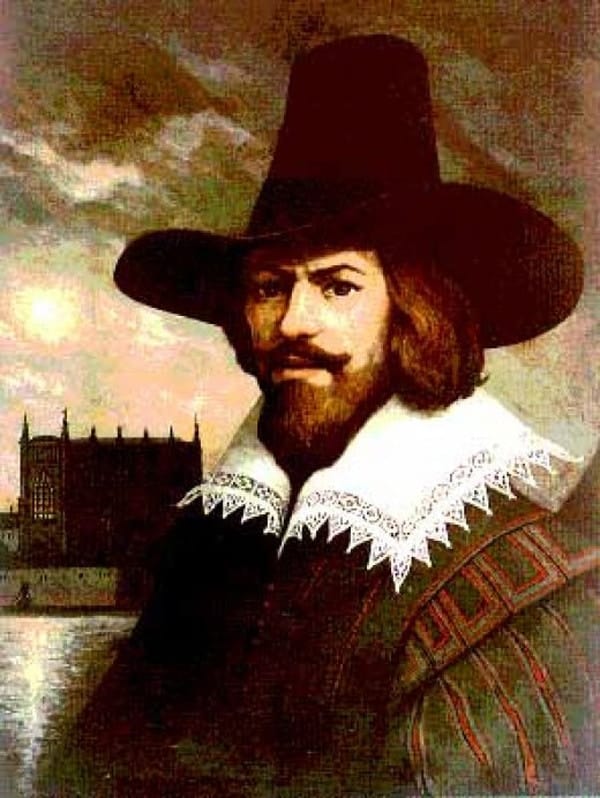You have probably seen the mask worn by protestors at G7/G8 summit meetings, or worn by members of the hacker group Anonymous, but you may not know too much about the man that the mask represents. His name was Guy Fawkes, and along with his co-conspirators, he plotted to assassinate King James I of England by blowing up the Houses of Parliament in 1605.

Gunpowder Plot: Background
The second half of the 16th century was a time of increasing religious persecution of Catholics in England. Following Queen Elizabeth I‘s accession to the throne in 1558 and the passage of the Act of Uniformity the following year, all British citizens, regardless of faith had to adhere to Protestantism. Catholics were required to attend Protestant services or face fines – 12 pence in 1559 but by 1581, fines had risen to £20, which was a colossal figure at the time. Catholics who refused to attend Protestant services were known as recusants (Latin for protest). Catholic religious practices, such as marriages and baptisms were forbidden and Catholic children had to be educated in Protestant faith schools.
Pope Pius V believed that the true queen of England was Mary Queen of Scots. In 1570, Pope Pius V issued a papal bull “Regnans in Excelsis,” which excommunicated Queen Elizabeth and absolved all British Catholics from allegiance to her. This action heightened fears of a Catholic revolt. Also, Jesuits priests who had studied in seminaries in Europe and who had returned to England to try and keep the Catholic faith alive were seen as a threat to the Protestant hierarchy.
In 1581, a law was introduced which made the withdrawal of English subjects from allegiance to the Queen or the Church, treason. In 1585 a law banning Jesuit priests from entering England was brought in. However, many Jesuit priests were smuggled into the country and continued to teach the Catholic faith, but when caught, were routinely executed for treason.

It was into this world that Guy Fawkes was born in 1570. His grandparents were recusant Catholics and following the death of his father, his mother married a Catholic man, Dionis Baynbrigge. At the age of 23, Fawkes left England to fight for Catholic Spain against Protestant Netherlands in the Eighty Years War. Within three years Fawkes, who had begun using the name Guido, had risen to a position of command and was held in high regard.
Following Queen Elizabeth’s death in 1603, Fawkes had hoped to persuade Spain to install a Catholic monarch on the British throne. But the Spanish were unwilling as they were still damaged by the devastating defeat of their Armada in 1588. Catholics hoped that persecution against them, which had increased under Queen Elizabeth I‘s reign would now decrease following the appointment of King James I to the British throne. King James I wife, Ann of Denmark, was Catholic. And for a brief time, it looked like their hopes might become a reality. The state ceased collecting recusancy fines and Catholics were no longer obliged to attend Protestant services.

